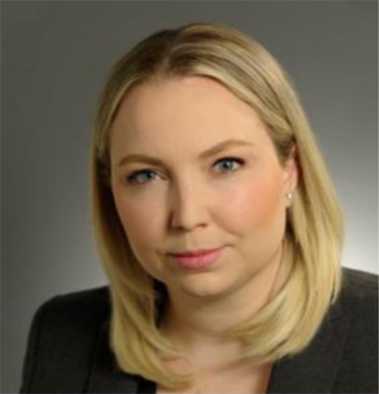17 August 2021
Frances Donald, Global Chief Economist & Head of Macro Strategy

Growing ESG awareness has also influenced the way we study global central banks and their policy decisions. In fact, we have a more dovish view of the future path of policy rates globally than would have been the case because we recognize that many central banks have begun to incorporate the impact of climate change into the way they assess economic growth and risks, and several of them are in the process of transitioning their mandates—formally and informally—to include more equitable growth.⁴ Indeed, all major central banks have been vocal and deliberate in their recognition of these issues. The Network of Central Banks and Supervisors for Greening the Financial System, which counts most developed-market central banks as members, has commissioned much in-depth research into ESG issues that we believe will inform central bank thinking going forward. In our view, disregarding this clearly discernable shift among policymakers could risk misreading central bank intentions and lead to overly hawkish macro forecasts.
Climate change can increase financial, credit, and liquidity risk
Climate transition can lead to lost economic growth, potentially through supply-and-demand shocks
Climate change may lead to higher household savings rate, and a higher risk premium may lower the natural rate of interest
Changes in price levels could become more commonplace as climate transition progresses
A growing focus on equitable policies that can benefit households more evenly
Source: The Network of Central Banks and Supervisors for Greening the Financial System, Manulife Investment Management, July 1, 2021.
We’ve previously written about how the COVID-19 outbreak could lead to structurally higher fiscal spending, bigger governments, and a much higher level of government bond issuance. It’s no secret that economists have tried and tested ways to integrate higher government spending into our economic outlooks; however, how governments spend their cash and what they spend it on have important implications for growth.
For context, the amount of government spending that’s been earmarked for green investments among developed economies in the aftermath of the COVID-19 outbreak is unprecedented: Roughly half of the Biden administration’s American Jobs Plan will be related to green initiatives,⁵ while 37% of the EU recovery fund is climate friendly.⁶ Crucially, these initiatives are expected to have a higher multiplier effect relative to non-green infrastructure spending.⁷ Higher levels of green government spending are also likely to reduce overall carbon transition costs and lower risks that might dampen growth as a result of climate change. These are important elements that need to be factored into macroeconomic forecasts.
There’s one other key aspect to the green spending narrative that’s relevant to global capital markets: surging demand—and, therefore, an expected ensuing rise in supply—for green sovereign bonds.⁸ Several 2021 European green bond auctions were heavily oversubscribed; these are typically longer maturity bonds with higher yields that have the potential to alter the global government bond landscape.⁹ We broadly expect the green sovereign bond market to become an important part of many countries’ debt management strategies and fiscal construct.
4 “Survey on monetary policy operations and climate change: key lessons for further analyses,” Network of Central Banks and Financial Supervisors for Greening the Financial System, December 2020.
5 “Does Biden’s American Jobs Plan Stack Up on Climate and Jobs?” World Resources Institute, April 1, 2021.
6 “Commission welcomes political agreement on Recovery and Resilience Facility,” European Commission, December 18, 2020.
7 “Building Back Better: How Big Are Green Spending Multipliers?” International Monetary Fund, March 19, 2021.
8 “Borrowers tap hot ESG demand to sell green bonds at a premium,” Financial Times, April 9, 2021.
9 Bloomberg, as of July 1, 2021.
The case for liquid real assets in a shifting inflation regime
For over a decade, global investors operated under the assumption that inflation would remain subdued, anchored below 2% - a belief reinforced by central bank credibility and structural disinflationary forces like globalisation and technological deflation. However, the post-pandemic world has ushered in a new regime of structurally higher inflation risks, with evolving policy responses that make liquid real assets increasingly attractive.
Greater China Equities: Perspective for Q4 2025
Heading into the final quarter of the year, we remain constructive, supported by the US Federal Reserve interest rate cutting cycle, Mainland’s demand-side stimulus, strategic priorities outlined in the 15th Five-Year Plan, continued recovery in corporate earnings and robust fund inflows.
Q&A: Potential market impact of a US government shutdown
The US Senate failed to pass a last-minute funding deal, triggering the first federal government shutdown in nearly seven years starting from 1 October. Our Multi-Asset Solutions Team shares insights on how markets have responded during past shutdowns, and how investors can position themselves amid the uncertainty.
The case for liquid real assets in a shifting inflation regime
For over a decade, global investors operated under the assumption that inflation would remain subdued, anchored below 2% - a belief reinforced by central bank credibility and structural disinflationary forces like globalisation and technological deflation. However, the post-pandemic world has ushered in a new regime of structurally higher inflation risks, with evolving policy responses that make liquid real assets increasingly attractive.
Greater China Equities: Perspective for Q4 2025
Heading into the final quarter of the year, we remain constructive, supported by the US Federal Reserve interest rate cutting cycle, Mainland’s demand-side stimulus, strategic priorities outlined in the 15th Five-Year Plan, continued recovery in corporate earnings and robust fund inflows.
Q&A: Potential market impact of a US government shutdown
The US Senate failed to pass a last-minute funding deal, triggering the first federal government shutdown in nearly seven years starting from 1 October. Our Multi-Asset Solutions Team shares insights on how markets have responded during past shutdowns, and how investors can position themselves amid the uncertainty.